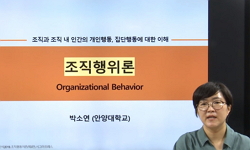데이터 센터와 같은 서버 시스템들이 점점 늘어남에 따라 전력 관리와 열 발생 관리는 중요한 문제가 되었다. 열 발생 관리의 경우 대부분 기존 연구들이 시스템의 오류를 방지하는 것을 목...
http://chineseinput.net/에서 pinyin(병음)방식으로 중국어를 변환할 수 있습니다.
변환된 중국어를 복사하여 사용하시면 됩니다.
- 中文 을 입력하시려면 zhongwen을 입력하시고 space를누르시면됩니다.
- 北京 을 입력하시려면 beijing을 입력하시고 space를 누르시면 됩니다.

CPU 냉각 팬 제어 기법을 이용한 서버 시스템 전력 관리 = Server System Power Management using CPU Cooling Fan Control Method
한글로보기https://www.riss.kr/link?id=A99761823
- 저자
- 발행기관
- 학술지명
- 권호사항
-
발행연도
2013
-
작성언어
Korean
-
주제어
데이터 센터 ; 냉각 제어 ; 전력 관리 ; 온도 모델 ; 전력 모델 ; data center ; cooling control ; power management ; temperature model ; power model
-
등재정보
KCI등재
-
자료형태
학술저널
- 발행기관 URL
-
수록면
159-166(8쪽)
-
KCI 피인용횟수
0
- 제공처
-
0
상세조회 -
0
다운로드
부가정보
국문 초록 (Abstract)
데이터 센터와 같은 서버 시스템들이 점점 늘어남에 따라 전력 관리와 열 발생 관리는 중요한 문제가 되었다. 열 발생 관리의 경우 대부분 기존 연구들이 시스템의 오류를 방지하는 것을 목적으로 하고 있다. 하지만 열 발생 관리에는 많은 전력이 사용된다. 따라서 전력을 고려한 열 발생 관리가 필요하다. 본 논문은 열 발생 관리를 전력 관리라는 측면에서 접근했다. 즉 열 발생 관리 중에 CPU 냉각 팬에 사용되는 전력과 온도 상승으로 인해 발생하는 추가 전력을 고려해서 전력을 최소화하며 열 발생 관리를 해주는 냉각 제어 기법을 구현하였다. 본 논문에서 제안하는 냉각 제어 기법은, 실험 결과 기존의 냉각 기법과 비교해서 전력 소모량을 각각 12%, 28% 감소시키는 것을 확인할 수 있었다.
다국어 초록 (Multilingual Abstract)
Managing power consumption and temperature of server systems has been increasingly important issue as the servers become large. The existing previous studies mainly focus on preventing system failures through decreasing temperature of target system. H...
Managing power consumption and temperature of server systems has been increasingly important issue as the servers become large. The existing previous studies mainly focus on preventing system failures through decreasing temperature of target system. However, reducing the temperature of system typically requires additional power consumption to perform cooling of the system and increased temperature of system naturally increases power consumption even under the same system loads. Therefore, we propose a novel power consumption minimization method considering both the additional power consumption by cooling and the increased power consumption through high temperature. Experimental results reveal that the proposed cooling control method saves power consumption up to 12% and 28% compared with the existing cooling control method.
목차 (Table of Contents)
- 요약
- Abstract
- 1. 서론
- 2. 관련 연구
- 3. 전력 및 온도 모델
- 요약
- Abstract
- 1. 서론
- 2. 관련 연구
- 3. 전력 및 온도 모델
- 4. 냉각 정책 결정 및 수행
- 5. 실험 결과 및 분석
- 6. 결론 및 향후 과제
- 참고문헌
참고문헌 (Reference)
1 W. Huang, "TAPO: Thermal-aware power optimization techniques for servers and data centers" 1-8, 2011
2 Wikipedia contributors, "Pulse-width modulation, In Wikipedia, the free encyclopedia" Wikimedia Foundation, Inc. 2012
3 W. Liao, "Microarchitecture level power and thermal simulation considering temperature dependent leakage model" 211-216, 2003
4 H. S. Kim, "MODELING SYSTEM POWER CONSUMPTION Considering DVFS and Thermal Effect" 2011
5 edgewall software, "Lm_sensors - Linux hardware monitoring"
6 A. Kumar, "HybDTM: a coordinated hardware-software approach for dynamic thermal management" 548-553, 2006
7 Donghwa Shin, "Energy-Optimal Dynamic Thermal Management: Computation and Cooling Power Co-Optimization" 6 (6): 340-351, 2010
8 R. Cochran, "Consistent runtime thermal prediction and control through workload phase detection" 62-67, 2010
9 Alan O.Sykes, "An Introduction to Regression Analysis" University of Chicago 1992
10 ASUS, "ASUS Q-Fan Smart Cooling System Enables Quieter and More Efficient Fan Operation"
1 W. Huang, "TAPO: Thermal-aware power optimization techniques for servers and data centers" 1-8, 2011
2 Wikipedia contributors, "Pulse-width modulation, In Wikipedia, the free encyclopedia" Wikimedia Foundation, Inc. 2012
3 W. Liao, "Microarchitecture level power and thermal simulation considering temperature dependent leakage model" 211-216, 2003
4 H. S. Kim, "MODELING SYSTEM POWER CONSUMPTION Considering DVFS and Thermal Effect" 2011
5 edgewall software, "Lm_sensors - Linux hardware monitoring"
6 A. Kumar, "HybDTM: a coordinated hardware-software approach for dynamic thermal management" 548-553, 2006
7 Donghwa Shin, "Energy-Optimal Dynamic Thermal Management: Computation and Cooling Power Co-Optimization" 6 (6): 340-351, 2010
8 R. Cochran, "Consistent runtime thermal prediction and control through workload phase detection" 62-67, 2010
9 Alan O.Sykes, "An Introduction to Regression Analysis" University of Chicago 1992
10 ASUS, "ASUS Q-Fan Smart Cooling System Enables Quieter and More Efficient Fan Operation"
11 H. R. Lee, "A Power Management Framework for Virtualized System Based on Multi-Core Processor" Kookmin University 2011
12 Amos Waterland, ""stress" stress project page"
동일학술지(권/호) 다른 논문
-
전력가격 신뢰도를 적용한 게임 이론 기반의 스마트 그리드 스케줄링 기법에 대한 연구
- 한국정보과학회
- 박상준(Sang-Joon Park)
- 2013
- KCI등재
-
모바일 보안 영상통신에서의 성능과 에너지 소모량, 화질간의 연관성 분석
- 한국정보과학회
- 이주성(Joosung Lee)
- 2013
- KCI등재
-
TZIPC : ARM TrustZone을 이용한 보안 IPC
- 한국정보과학회
- 유성배(Sungbae Yoo)
- 2013
- KCI등재
-
MDA 기반 스마트 플랫폼 어플리케이션 저작 도구 아키텍처
- 한국정보과학회
- 이진(Jin Lee)
- 2013
- KCI등재
분석정보
인용정보 인용지수 설명보기
학술지 이력
| 연월일 | 이력구분 | 이력상세 | 등재구분 |
|---|---|---|---|
| 2014-09-01 | 평가 | 학술지 통합(기타) | |
| 2013-04-26 | 학술지명변경 | 한글명 : 정보과학회논문지 : 시스템 및 이론 </br>외국어명 : Journal of KIISE : Computer Systems and Theory |  |
| 2011-01-01 | 평가 | 등재학술지 유지(등재유지) |  |
| 2009-01-02 | 학술지명변경 | 한글명 : 정보과학회논문지 : 시스템 및 이론 </br>외국어명 : Journal of KISS : Computer Systems and Theory |  |
| 2009-01-01 | 평가 | 등재학술지 유지(등재유지) |  |
| 2007-01-01 | 평가 | 등재학술지 유지(등재유지) |  |
| 2005-01-01 | 평가 | 등재학술지 유지(등재유지) |  |
| 2002-01-01 | 평가 | 등재학술지 선정(등재후보2차) |  |




 ScienceON
ScienceON DBpia
DBpia






